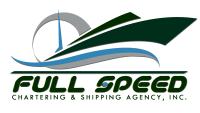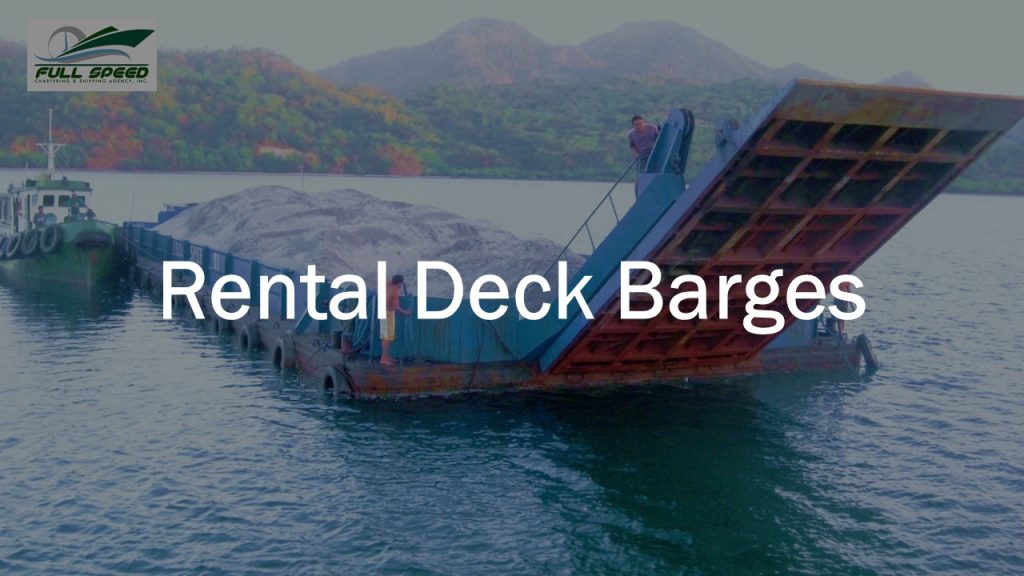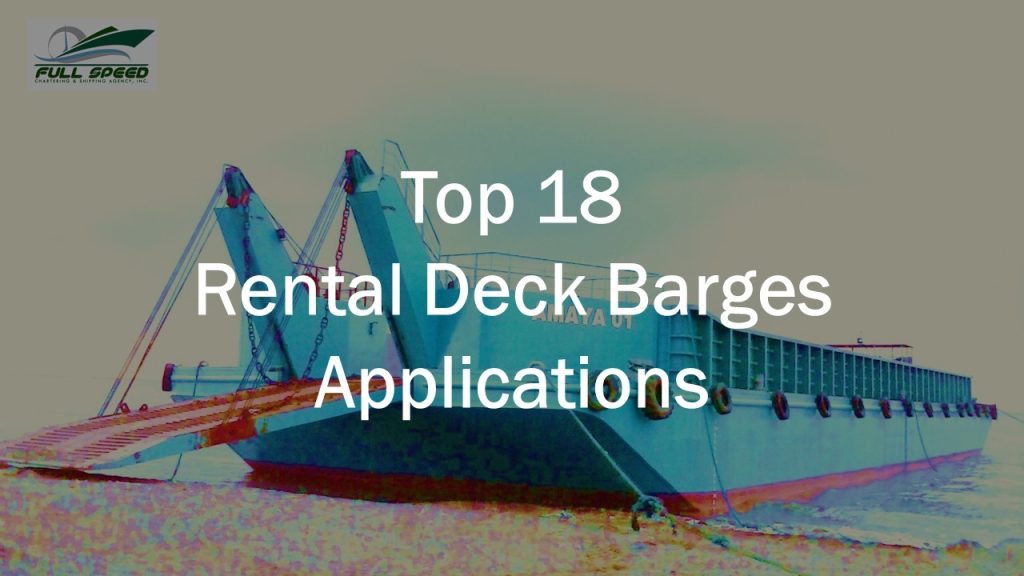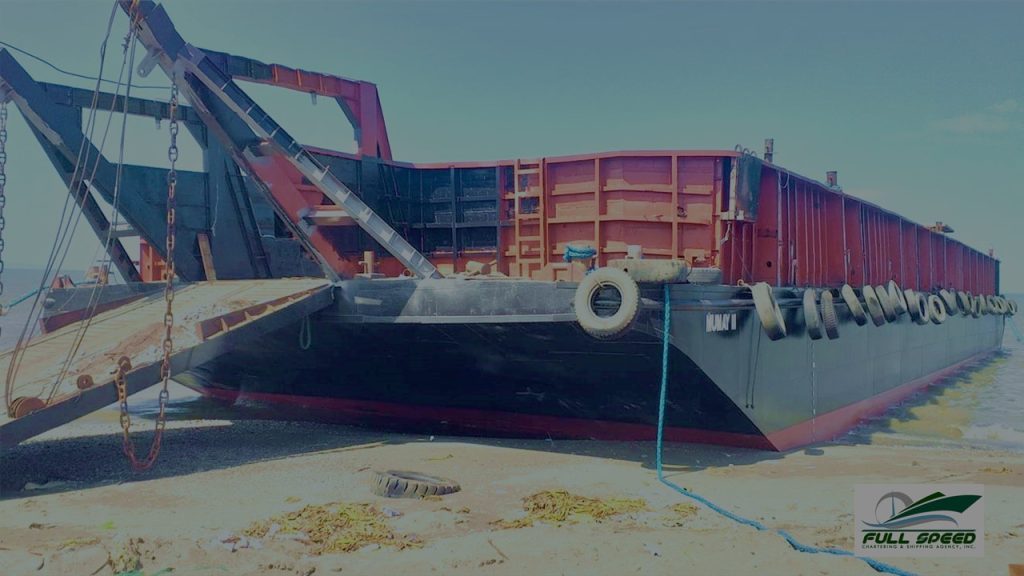The Philippines, known for its rich mineral deposits, has become a prime destination for mining operations. However, navigating the complex logistics of transporting minerals across vast distances is no easy feat. That’s where chartering vessels comes into play—a strategic solution that ensures smooth and efficient transportation of mined materials. In this article, we dive into the world of chartering vessels for mining operations in the Philippines, exploring the benefits, challenges, and key considerations that mining companies must grapple with when opting for this mode of transport.
Click here to view our chartering capabilities for mining companies in the Philippines.
The Mining Industry in the Philippines
The mining industry in the Philippines has long been a topic of controversy and debate. While some see it as a vital source of economic growth and development, others decry its negative impact on the environment and indigenous communities. In recent years, however, there seems to be a shift towards sustainable mining practices.
The government has implemented stricter regulations and is encouraging companies to adopt responsible mining methods. This includes proper waste management, reforestation efforts, and providing livelihood programs for affected communities. Additionally, partnerships with international organizations are being explored to ensure best practices are followed.
Despite these efforts, challenges still remain. Corruption within the industry continues to be an issue that needs to be addressed in order for real change to occur. Moreover, there is a need for increased transparency in reporting mining activities and their corresponding impact on local ecosystems.
Chartering vessels for mining operations in the Philippines plays a crucial role in transporting materials such as ores and minerals from mines to processing plants or export hubs. With over 7,100 islands spread across the archipelago, maritime transportation becomes essential for efficient supply chains within this industry.
Companies involved in mining operations often require specialized vessels capable of carrying heavy loads while navigating through shallow waters or rough sea conditions common in some areas of the Philippines. These vessels need experienced crews who understand both local maritime regulations and the unique challenges associated with transport within the mining sector.
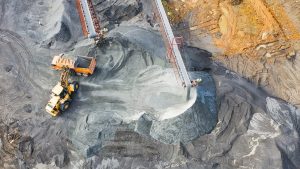
Overview of Chartering Vessels for Mining Operations
Chartering vessels for mining operations in the Philippines has become an increasingly popular choice for many mining companies. With its rich natural resources and extensive coastline, the country offers unique opportunities for offshore mining activities. Vessels chartered for these operations are typically specialized dredging platforms equipped with advanced technology to extract minerals from the seabed.
One main advantage of chartering vessels is the flexibility it provides to mining companies. Instead of investing in permanent infrastructure, companies can rent vessels according to their specific needs and project timelines. This not only reduces upfront costs but also allows for greater adaptability as mining projects often require different types of equipment at various stages.
Moreover, chartering vessels for mining transportation offers a level of expertise that might be unavailable within a company’s internal resources. Companies can partner with experienced vessel operators who have deep knowledge of offshore mining techniques, local regulations, and environmental considerations specific to the Philippines. Collaborating with these experts ensures maximum efficiency and compliance throughout the duration of the operation.
Chartering vessels for mining operations in the Philippines presents several advantages such as cost-effectiveness and access to specialized expertise. This method allows companies to efficiently harness valuable mineral resources while minimizing risks associated with large capital investments in infrastructure.
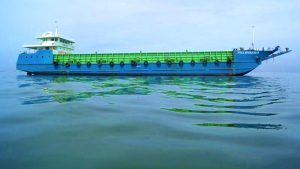
Understanding the Basics of Chartering Vessels
Chartering vessels is a fundamental aspect of mining operations in the Philippines, providing companies with the means to transport their equipment, personnel, and resources to remote locations. But understanding the basics of chartering vessels goes beyond simply hiring a boat and setting sail. It involves considering various factors such as vessel types, costs, contract terms, and legal regulations.
One crucial consideration in chartering vessels is selecting the appropriate type of vessel for your mining operation. For instance, if you are transporting heavy machinery or large quantities of materials, you may need to opt for a barge or bulk carrier to accommodate your specific needs. On the other hand, if you require more flexibility and maneuverability in navigating narrow waterways or shallow areas near coastal mines, a small-sized utility boat may be more suitable.
Another critical factor when chartering vessels is cost. While it may be tempting to choose the cheapest option available, remember that quality and reliability should also be taken into account. A lower-cost vessel might compromise safety standards or lack necessary certifications. It’s worth investing in reputable charters that prioritize professionalism and compliance with industry regulations rather than solely focusing on minimizing expenses.
Navigating through all these considerations can seem overwhelming at first; however, gathering extensive information about each potential vessel hire will immensely help make informed choices while keeping your operations efficient and cost-effective. By thoroughly understanding the basics involved in chartering vessels for mining operations in the Philippines, you can ensure smooth sailing toward achieving your goals while avoiding unnecessary challenges along the way.

Definition and concept of chartering vessels
Chartering vessels is a crucial aspect of any mining operation, particularly in a country like the Philippines where natural resources are abundant and require efficient transportation. In simple terms, chartering vessels involves the process of hiring a ship or boat to transport goods or materials from one location to another. It provides mining companies with the flexibility and freedom to select the most suitable vessel for their specific needs, whether it be bulk carriers for transporting large quantities of minerals or specialized ships equipped with heavy machinery for offshore mining. The concept of chartering vessels goes beyond merely renting a vessel; it involves detailed negotiations, contracts, and considerations regarding factors like cargo capacity, route planning, crew requirements, and compliance with international maritime laws.
One unique advantage of chartering vessels for mining operations is its adaptability to changing circumstances. Mining projects often face uncertain timelines due to various factors such as environmental conditions, regulatory approvals, and supply chain disruptions. By chartering vessels instead of owning them outright, mining companies can adjust their shipping requirements based on these changing circumstances without being tied down by long-term commitments or costly investments in fleet management.
Furthermore, chartering vessels allows mining companies to tap into a diverse range of vessel types and sizes that might not be available within their own fleet. For instance, certain mines may require shallow-draft barges to navigate through narrow waterways while others may require advanced offshore support vessels designed specifically for deep-sea exploration. Chartering enables access to specialized equipment and expertise required for efficient operations in diverse maritime environments.
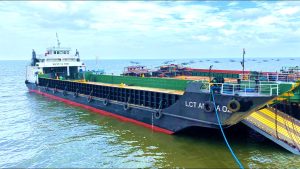
Advantages of Chartering Vessels for Mining Operations
One of the major advantages of chartering vessels for mining operations is the flexibility it provides. Chartering a vessel allows mining companies to transport equipment and materials efficiently, as they have full control over the schedule and route. This means that companies can select vessels that are specifically suited to their needs, whether it be in terms of capacity, speed, or specialized equipment on board. Additionally, with chartering, companies have the freedom to adapt their transportation strategy as needed, such as increasing or decreasing vessel sizes based on demand.
Another advantage of chartering vessels for mining operations is cost-effectiveness. Rather than owning and maintaining their own fleet of vessels, which can be costly and time-consuming, mining companies can simply hire a vessel when needed. This eliminates the need for capital investment in ships and reduces ongoing expenses such as crew salaries and maintenance costs. Chartering also prevents financial risks associated with fluctuations in the shipping industry, such as changes in fuel prices or vessel availability since these responsibilities fall on the owner’s side.
Lastly, chartering vessels for mining operations allows companies to access global markets more efficiently. Mining activities often take place in remote areas or islands where transportation infrastructure may be limited or non-existent. Using chartered vessels like bulk carriers or barges equipped with appropriate facilities for loading and unloading heavy ore concentrates or other mined products directly from mine sites to ports or refineries worldwide – enables efficient access to a broader international customer base while circumventing potential logistical challenges found within isolated regions.

Factors to Consider when Chartering Vessels for Mining Transportation
When it comes to chartering vessels for mining transportation, there are several factors that need to be carefully considered. Firstly, it is essential to assess the type and capacity of the vessel needed. The size and weight of the mining equipment and materials that require transportation will determine whether a larger or smaller vessel is required.
Another important factor to consider is the availability of suitable ports and terminals. When choosing a vessel for mining transportation, it is crucial to ensure that the selected ports have the necessary infrastructure to accommodate large vessels and handle heavy cargo. Additionally, considering the proximity of these ports to the mining site can play a vital role in minimizing transportation costs and time.
Beyond logistical concerns, environmental factors should not be overlooked when chartering vessels for mining operations. Choosing environmentally friendly vessels can help mitigate negative impacts on marine ecosystems during transportation activities. Taking into account energy efficiency ratings, emissions control systems, and other eco-friendly features can lead to sustainable solutions in mining transportation.
Overall, chartering vessels for mining operations requires careful consideration of various factors including vessel type and capacity, port availability, as well as environmental considerations. By thoroughly analyzing these aspects before making any decisions, companies involved in mining ventures can optimize their logistics strategies while minimizing their ecological footprint in order to ensure efficient and sustainable transport operations.
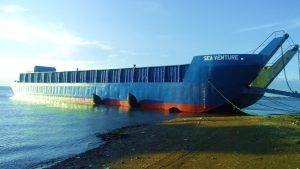
Cargo Volume and Weight Requirements
When it comes to chartering vessels for mining operations in the Philippines, cargo volume and weight requirements play a crucial role in determining the success and efficiency of the entire operation. Mining companies must carefully assess their cargo needs, taking into consideration factors such as the type and quantity of minerals being transported, as well as any additional equipment or materials that are required.
One important consideration is ensuring that the vessel’s cargo holds have sufficient capacity to accommodate the desired volume of minerals. While larger vessels may offer greater cargo space, they also come with higher costs, so finding the right balance is essential. Additionally, mining companies must consider the weight limits imposed by port regulations and ensure that their cargo falls within these parameters to avoid delays or penalties.
In recent years, there has been a growing trend towards optimizing cargo transportation by utilizing new technologies. For instance, some mining companies are exploring automated systems that can accurately measure and track both payload volume and weight during loading and unloading processes. These technologies not only improve operational efficiency but also enhance safety by reducing human error.
By carefully assessing cargo volume and weight requirements for mining operations in the Philippines, companies can maximize profitability while simultaneously complying with regulations. It’s important to stay up-to-date with industry trends to take advantage of emerging technological advancements that can streamline operations further. Ultimately, understanding these requirements will help businesses make informed decisions when chartering vessels for their mining endeavors.

Geological challenges and weather conditions
One of the major geological challenges in the Philippines that mining operations must contend with is the presence of numerous fault lines across the archipelago. These fault lines, such as the Philippine Fault System and the Marikina Valley Fault System, pose a significant risk to mining operations as they can trigger earthquakes and other seismic activities. Mining companies need to carefully consider these geological hazards and implement robust safety measures to ensure worker safety and minimize potential damage to mining equipment and infrastructure.
Additionally, weather conditions in the Philippines add another layer of complexity to mining operations. The country experiences a tropical climate, characterized by typhoons, heavy rainfall, and extended periods of intense heat. This unpredictable weather pattern can disrupt mining activities, leading to delays in production schedules and increased operational costs. Moreover, heavy rainfall can cause landslides and erosion in mountainous areas where many mining sites are located. To mitigate these risks, it is crucial for mining companies to develop comprehensive contingency plans that account for different weather scenarios and incorporate measures such as reinforcing structures against strong winds or redirecting rainwater away from mine sites.
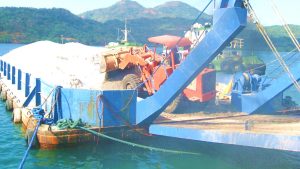
Time constraints and project deadlines
Time constraints and project deadlines play a crucial role in the success of chartering vessels for mining operations in the Philippines. The fast-paced nature of the mining industry requires efficient planning and execution to maximize productivity and minimize costs. Failing to meet project deadlines can result in significant financial losses, as delays can disrupt production schedules and impact revenue generation.
Furthermore, time constraints add pressure on stakeholders involved in the chartering process. From negotiating contracts with vessel owners to ensuring compliance with environmental regulations, every step must be meticulously executed within tight timelines. Time is money in this industry, and every delay can have ripple effects throughout the entire supply chain.
To address these challenges effectively, it is crucial for mining companies to adopt robust project management strategies that prioritize time management. This involves setting realistic project timelines from inception to completion and constantly monitoring progress against predefined milestones. By incorporating flexibility into these schedules, companies can better handle unforeseen circumstances or changes in operating conditions while still meeting critical deadlines.
Ultimately, the successful chartering of vessels for mining operations in the Philippines requires a proactive approach that acknowledges time constraints as a driving force behind operational efficiency. By embracing innovative technologies and investing in competent staff who understand the significance of meeting project deadlines, mining companies can ensure seamless operations while maximizing profitability even under demanding time frames.

Types of Vessels Commonly Used in Mining Operations
When it comes to mining operations, a variety of vessels are commonly used to transport materials and equipment. One such vessel is the bulk carrier, which is specifically designed to transport large quantities of cargo, such as coal or iron ore. These massive ships can carry thousands of tons of material and are equipped with specialized cargo handling equipment to efficiently load and unload their cargo.
Another commonly used vessel in mining operations is the tugboat. Tugboats play a crucial role in towing barges loaded with mining equipment and materials. Their strong engines and maneuverability make them ideal for moving heavy loads through narrow waterways or assisting larger vessels in ports or harbors.
In addition to bulk carriers and tugboats, mining operations also often utilize barge vessels. Barges are flat-bottomed boats that are designed for carrying bulky or oversized cargo on inland waterways. They provide a cost-effective means of transportation for transporting heavy machinery, storage tanks, or other large equipment needed for mining activities.
Overall, these various types of vessels play essential roles in the efficient transportation of materials and equipment needed for mining operations. Understanding their capabilities and functions can help ensure smooth logistical processes during chartering vessels for mining activities in the Philippines or any other location around the world.
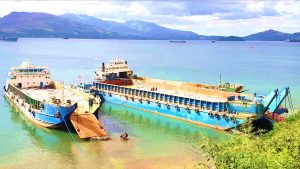
Case Studies: Successful Chartering of Vessels in the Philippines
Case studies offer valuable insights into real-world strategies and tactics that have led to successful outcomes. In the context of chartering vessels for mining operations in the Philippines, several case studies stand out as examples of effective approaches. One such case study involves a mining company that strategically collaborated with Full Speed Chartering and Shipping Agency, Inc. (FSCSAI) to charter specialized vessels. By leveraging the shipping company’s expertise and existing infrastructure, this collaboration allowed for streamlined logistics, reduced costs, and improved overall efficiency.
Another compelling case study highlights an international mining corporation’s decision to partner with a Philippine-owned vessel chartering company, FSCSAI. The key to their success was the deep understanding and appreciation of local regulations and customs possessed by both parties involved. This partnership ensured smooth coordination between various stakeholders, expedited permits required for vessel operations, and minimized delays or complications often encountered when working within different jurisdictions.
These case studies demonstrate the importance of establishing robust partnerships in the process of chartering vessels for mining operations in the Philippines. Collaboration with established local companies can yield numerous advantages, such as access to specialized knowledge, networks, and resources that are crucial for navigating complex regulatory frameworks present in this industry. Moreover, these partnerships foster mutual trust and understanding between stakeholders from diverse backgrounds – a vital component for ensuring successful outcomes in challenging environments like the Philippines.
These case studies underscore how strategic collaborations can play a pivotal role in achieving successful vessel charters for mining operations in the Philippines.
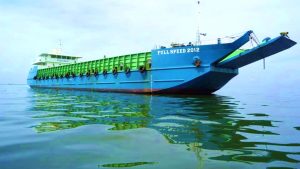
Finding the Right Vessel Chartering Company for Mining Operations
When it comes to mining operations in the Philippines, finding the right vessel chartering company can be a critical factor in the success of your project. With so many options available, how do you navigate through all the choices and find a company that aligns with your needs? One important consideration is the experience and expertise of the chartering company in handling mining cargo. Look for a company that has a proven track record in transporting heavy equipment, minerals, and other materials related to mining operations. This will ensure that they have the necessary knowledge and resources to handle your specific requirements.
Another crucial factor to consider is safety. Mining operations involve working with hazardous materials, so it is essential to choose a vessel chartering company that prioritizes safety protocols. Check if they have proper safety certifications and protocols in place, such as ISO certifications or membership in industry-specific organizations that promote safe transportation practices.
Furthermore, it’s imperative to go beyond simply looking at prices when selecting a vessel chartering company for mining operations. While cost is undoubtedly an important consideration, it should not be the sole deciding factor. Consider other factors like reliability, timeliness, and flexibility in their services. A reliable chartering company will ensure that your cargo reaches its destination on time without delays or complications. Additionally, look for a company that offers flexibility in terms of scheduling and adapting to any unforeseen circumstances during transportation.
Finding the right vessel chartering company for mining operations requires careful consideration of multiple factors beyond just price alone.
Looking for the Best Chartering Vessel Company for Your Mining Operations in the Philippines?
Full Speed Chartering and Shipping Agency, Inc. (FSCSAI) is undoubtedly the top choice when it comes to chartering vessels for mining operations in the Philippines. With their extensive experience and excellent track record, FSCSAI has proven time and again that they are the go-to company for all your maritime needs.
- Email us: info@fullspeedchartering.com
- Call our 24-hour hotline: +63 9285081021
- Viber: +63 9285081021
- WhatsApp: +63 9285081021
- Facebook Messenger: Click here
- Click here to inquire
What sets FSCSAI apart from other chartering vessel companies is their dedication to providing exceptional service tailored specifically to meet the unique requirements of mining operations. They understand the importance of efficiency and reliability in the mining industry, which is why they have a wide range of vessels available that can accommodate various cargo sizes and specifications. From small-scale operations to large-scale projects, FSCSAI has you covered.
One of the key advantages of choosing FSCSAI is their expert team of professionals who have in-depth knowledge about navigating through Philippine waters. They are well-versed in all local regulations and protocols, ensuring a seamless journey for your cargo from start to finish. Additionally, FSCSAI prioritizes safety above all else and maintains strict adherence to industry standards, giving you peace of mind knowing that your valuable cargo is in capable hands.
If you’re looking for the best chartering vessel company for your mining operations in the Philippines, look no further than Full Speed Chartering and Shipping Agency, Inc. With their proven expertise, dedicated team, and commitment to excellence, they are undoubtedly the ideal partner to support your mining ventures at sea.

Benefits and Opportunities in Chartering Vessels for Mining Operations
Chartering vessels for mining operations in the Philippines presents a number of benefits and opportunities that can greatly enhance the efficiency and profitability of these ventures. One key advantage is the flexibility it offers, allowing mining companies to select vessels that are specifically tailored to meet their unique requirements. This includes factors such as cargo capacity, equipment compatibility, and even geographic location.
Another significant benefit is the cost-effectiveness of chartering vessels compared to owning them outright. Mining operations often require specialized equipment and infrastructure that can be expensive to acquire, maintain, and transport. By chartering vessels instead, companies can avoid these upfront costs and focus their resources on core operations. Additionally, chartering provides the opportunity to access a wide range of vessel types based on project needs, from smaller barges for shallow rivers or coastal areas to larger ocean-going vessels capable of transporting heavy machinery.
Moreover, chartering vessels also allows mining companies to tap into global networks and logistical expertise offered by professional shipping operators. These operators have extensive experience in managing complex supply chains and ensuring timely delivery of goods. They can provide valuable support services such as customs clearance facilitation or coordinating with local authorities at ports of call – streamlining processes for smooth mining operations. Ultimately, by utilizing these services, mining firms gain access to knowledgeable professionals who understand the intricacies involved in transporting goods across different regions efficiently.
Chartering vessels for mining operations presents a range of benefits and opportunities that can help optimize resource utilization while minimizing financial risks associated with ownership.
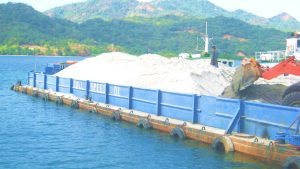
Takeaway: Chartering Vessels for Mining Operations in the Philippines
In conclusion, chartering vessels for mining operations in the Philippines can be a beneficial strategy for companies looking to tap into the country’s rich mineral resources. By engaging in this approach, companies can avoid the high costs associated with ownership and maintenance of their own vessels. Additionally, chartering allows for more flexibility as companies can select vessels that are specifically suited to their mining needs, such as those equipped with specialized equipment for deep-sea mining.
Furthermore, chartering vessels offers an opportunity for collaboration and partnership between mining companies and vessel owners. This cooperation can result in innovative solutions and the sharing of knowledge and expertise in both the mining and maritime industries. It also opens up possibilities for joint ventures or profit-sharing agreements that could potentially reduce financial risks while maximizing returns on investment.
Ultimately, by considering chartering options, mining companies operating in the Philippines can take advantage of cost-efficiency, flexibility, collaboration opportunities, and strategic partnerships to enhance their overall operational effectiveness and optimize their mineral extraction efforts. The evolving dynamics of global trade also make it increasingly pertinent to explore alternative methods like vessel chartering to stay competitive in today’s fast-paced business environment.
